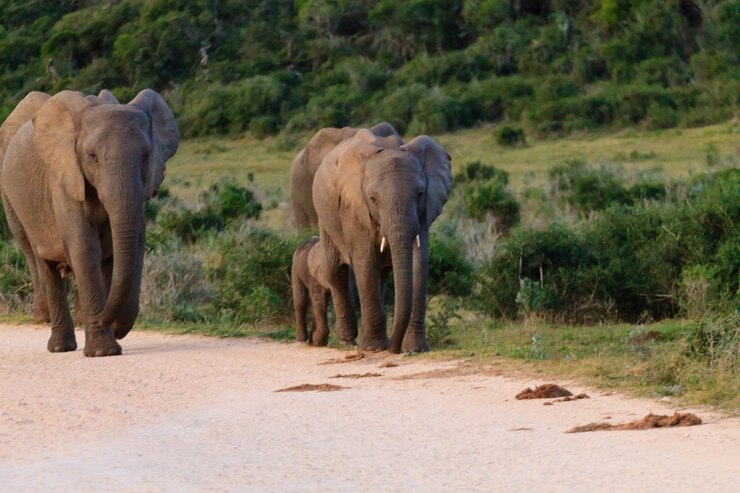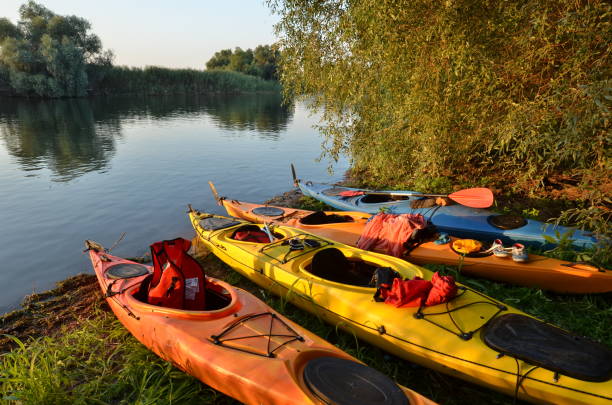Addo Elephant National Park is one of South Africa’s most celebrated national parks, known for its robust conservation efforts and thriving elephant population. Located in the Eastern Cape, the park not only protects elephants but also offers sanctuary to a diverse range of wildlife species and ecosystems.
The success of Addo Elephant National Park has been driven by a combination of history, conservation initiatives, community engagement, and sustainable tourism practices.
The Early Beginnings of Addo Elephant National Park
Addo Elephant National Park was not always the expansive, thriving wildlife reserve it is today. Its journey towards becoming a successful conservation haven began in the early 20th century. Initially established in 1931 as a small sanctuary for the endangered elephant population, the park’s purpose was to protect elephants that were being hunted for their tusks and the destruction of crops in local farmland.
In the early 1900s, the elephant population in the Eastern Cape was rapidly declining due to hunting and land encroachment. At one point, fewer than 20 elephants remained in the region, prompting the government to take action. Addo was initially created as a response to these dwindling numbers and to curb human-elephant conflict.
The park began with a modest size of only 2,000 hectares, but its significance was clear. It was the first time in South African history that elephants had been given a dedicated area of land to call home, and this would lay the foundation for Addo’s later success.
Expanding the Park’s Boundaries
As the elephant population in Addo slowly began to recover, the park’s boundaries expanded significantly. The expansion efforts were driven by the recognition that conservation requires more than just protecting individual species—it also involves preserving their natural habitats. As the elephant herd grew, so did the need for more space to accommodate them.
In the 1950s, the park was expanded by a few thousand hectares, but it was not until the 1980s that the significant expansion began. The addition of new areas to the park was crucial for creating a sustainable environment for elephants and other wildlife. The 1980s also saw the start of the “Big Five” conservation efforts, which contributed to Addo’s transition from a single-species sanctuary to a broader wildlife park.
In the 1990s, the park’s size increased substantially to its current 180,000 hectares, which now includes a variety of ecosystems such as coastal, bush, and forested areas. This expansion allowed Addo to become home to not only elephants but also lions, rhinos, buffalo, and various other species, earning it the title of a “Big Seven” park (elephants, lions, rhinos, buffalo, the great white shark, the southern right whale, and the leopard).
Key Conservation Efforts
One of the primary reasons for Addo Elephant National Park’s success is its unwavering focus on conservation. Over the years, a series of strategic initiatives have been implemented to ensure the protection and sustainability of the park’s biodiversity.
Elephant Population Growth
At the heart of Addo’s conservation success lies the dramatic recovery of its elephant population. When the park was first established, there were only 11 elephants remaining. However, through dedicated protection, controlled breeding programs, and the park’s expansion, the elephant population has grown significantly. Today, Addo is home to more than 600 elephants, making it one of the largest populations of elephants in a protected area in South Africa.
The park has also implemented a highly successful elephant management plan. This plan focuses on the delicate balance between protecting elephants and managing their impact on the environment. Because elephants are large herbivores that can significantly alter landscapes, careful monitoring and management are crucial to prevent overgrazing and the destruction of vital vegetation.
Habitat Protection
Addo’s success is not only about protecting elephants but also about maintaining the health of the ecosystems that sustain them. The park is home to a diverse range of habitats, including grasslands, forests, and coastal areas, each offering shelter and food for various species. In particular, the park’s efforts to rehabilitate the coastal dunes and bush areas have been key in supporting the park’s wildlife.
Invasive species management is another vital aspect of the park’s conservation. Efforts to control invasive plant species that threaten native vegetation have been pivotal in maintaining a healthy ecosystem. By ensuring that the park’s ecosystems remain intact and undisturbed, Addo ensures that its diverse range of animals, from elephants to rare bird species, have a stable and thriving environment.
Community Engagement and Support
A key factor in Addo Elephant National Park’s success is the active engagement of local communities. From its early days, Addo’s establishment has involved collaboration with local farmers, communities, and conservationists. The park works closely with the surrounding communities to promote awareness and education on wildlife conservation and the benefits of protecting their natural resources.
The park has also implemented sustainable tourism practices that benefit both the environment and the local economy. Tourism plays a critical role in Addo’s financial sustainability, providing funds for park management and conservation projects.
The park has developed eco-friendly tourism initiatives, including guided safaris, education programs, and volunteer opportunities, that promote responsible wildlife viewing and create economic opportunities for nearby communities.
Additionally, the park has fostered partnerships with environmental organizations and government agencies to strengthen its conservation efforts. These collaborations have led to joint funding, research projects, and advocacy for broader wildlife protection policies in South Africa.
Sustainable Tourism and Economic Impact
Tourism has become a crucial driver of Addo Elephant National Park’s success. The park is now one of the most visited in South Africa, attracting both local and international visitors who come to witness the park’s wildlife, including its iconic elephants. In addition to attracting wildlife enthusiasts, the park is also an important destination for eco-tourism.
Addo’s approach to tourism is centered on sustainability. The park offers a range of eco-friendly accommodation options, from tented camps to luxury lodges, which minimize the environmental footprint while providing visitors with an immersive wildlife experience. Sustainable tourism practices have contributed to the park’s success by generating income that supports further conservation initiatives.
The park also benefits the surrounding communities, as visitors to Addo contribute to the local economy through accommodation, food, and various services. This economic boost has led to improved infrastructure and educational opportunities for local residents, which in turn enhances their support for conservation efforts.
The Future of Addo Elephant National Park
Looking to the future, Addo Elephant National Park is focused on maintaining its successes while adapting to new challenges. Climate change, poaching, and human-wildlife conflict are ongoing concerns that the park must address. However, Addo’s leadership in conservation and commitment to sustainable practices provide a solid foundation for the park’s continued success.
Efforts to ensure the long-term survival of its wildlife, including research and adaptive management strategies, will be critical. Additionally, the park continues to expand its educational outreach, both locally and globally, to inspire the next generation of conservationists.


